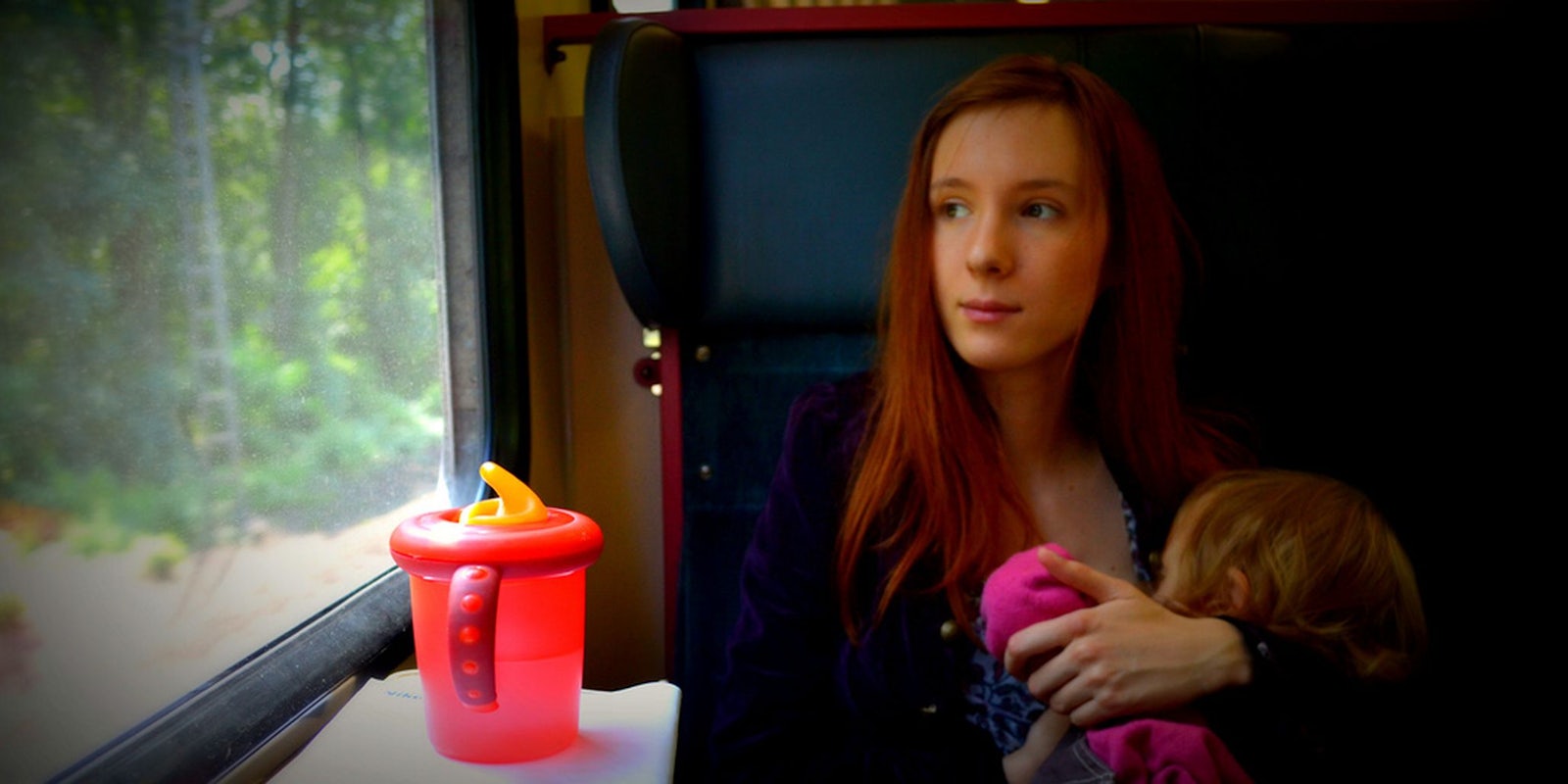Nursing parents, be on the lookout, because a breastfeeding emoji may soon be on its way! Rachel Lee, a registered nurse, recently proposed a breastfeeding emoji to the Unicode Consortium, the organization responsible for standardizing the emoji set we all know and love. While it’s good to keep in mind that not everyone who breastfeeds necessarily identifies as a woman or a mother — transgender men, for example, may breastfeed, as may many non-binary people — there is no doubt that a breastfeeding emoji is sorely lacking for parents across the board.
Although for some reason our culture still looks on breastfeeding as taboo (I know—it makes no sense), it’s a huge part of many people’s lives; indeed, providing sustenance for babies is one of the main functions of breasts. What’s more, it’s an activity that happens at all hours. Just think about how it easy it would be to simply hit the breastfeeding emoji when someone asks what you’re doing up at 2:00 a.m. on a Tuesday?
It’s especially good to see this proposal, given how emoji have been making a move towards becoming more inclusive over time. It was big news, of course, when skin tone options became available on iOS in 2015; what’s more, there are now emoji for same-sex families,single-parent households, and women depicted performing a variety of roles and careers. In a sense, it’s actually surprising that we don’t already have a breastfeeding emoji at our fingertips.
As you can see above, the proposed emoji features a person cradling their baby as the baby feeds from an exposed breast. As Lee writes in her proposal to Unicode, “I propose adding an emoji for breastfeeding as a complement to the existing baby bottle emoji, and to complete the set of family emojis. The lack of a breastfeeding emoji represents a gap in the Unicode Standard given the prevalence of breastfeeding in cultures around the world, and throughout history.”
Lee makes a really excellent point here. In general, our society talks about breastfeeding quite often, and it usually comes down to controversy. When people try to control women’s bodies, and how and when we expose our bodies, things can get really heated. When it comes to women in the workforce who may need to breastfeed or pump milk, for instance, people often have a lot of strong ideas about what is “appropriate” or not. These issues largely come down to ideas about breasts being inherently sexual, and the sexualization of women’s bodies. (Spoiler alert: Breasts can be sexual in certain situations, but aren’t necessarily so; what’s more, sexualizing someone’s body without their consent isn’t really an OK thing to do.)
Back in March of 2016, Emojipedia released the top 30 most requested emojis. Lo and behold, breastfeeding made the list! Lee points this out in her proposal as well, showing that many people have a desire for this emoji, which suggests it will get a lot of usage.
It’s worth noting that the breastfeeding emoji isn’t out yet; in order for us to be able to use it, first Unicode must approve it as part of the standard set, after which each individual platform must design and implement the emoji for their system. That means that, even if Unicode does approve it, we’ll still have to wait for Apple, Android, Google, and every other platform that uses the Unicode Standard to create and deploy their own version of it before we can start texting it to each other.
But it’s super exciting nonetheless, and could go a long way toward normalizing breastfeeding. The language we use matters — even when that language is a tiny little picture displayed on a phone screen.
More From Bustle:
• How often should I get a mammogram?
• What changed when I went makeup-free for a month
• You can now order food on Facebook
This story originally appeared on Bustle and has been republished with permission.

